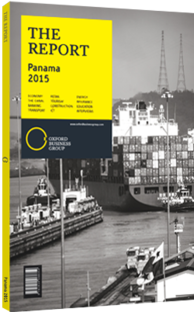Agustín de la Guardia, Executive Vice-President and General Manager, Cable & Wireless Panama: Interview

Interview: Agustín de la Guardia
What is the current mobile environment in Panama, and how can this be developed further?
AGUSTIN DE LA GUARDIA: Panama’s mobile penetration is in excess of 200%, according to the International Telecommunications Union. With four operators competing in a predominantly pre-paid market (95%) and 95% of the population covered, prices have been forced down.
The mobile device has become the primary means of internet access for many inhabitants; it is bridging the digital divide. In areas of the country that lack paved roads and commercial electricity, citizens are connected via mobile phones. This presents a distinct opportunity to promote mobile connectivity as a means to access information and e-government services.
Mobile connectivity can also help to automate processes, making it easier for citizens to interact with the government, whether for retrieving important information or facilitating electronic self-service for routine interactions and procedures. This will also enable the use of mobile wallets as an alternate means of payment and monetary transactions, not just for remittances.
What capacity upgrades are needed in terms of long-term evolution (LTE) infrastructure?
DE LA GUARDIA: LTE technology provides more than 10 times the average throughput of predecessor technologies like wide CDMA. As such, fibre-optic back-hauls are required to connect all radio base stations. In addition, in order to achieve its technology capacity, it is necessary to have 20 MHz up and down.
The spectrum band currently being used for the LTE rollout by all four operators is the 700-MHz type, which allows 10 MHz to be assigned to each mobile concessionaire. Operators and the regulator are exploring options to enable additional frequency bands, such as the AWS band (2100 MHz down, 1700 MHz up) and 2.6-MHz band, to facilitate further LTE expansion. The 700-MHz band is a coverage band suitable for urban areas, but for high-density metropolitan areas a higher-frequency band is more suitable for capacity needs.
How has the implementation of number portability (NP) impacted competition in the sector?
DE LA GUARDIA: NP is definitely a relevant element for achieving a level playing field in mobile markets. Using a phone number as a way to secure or retain customers is no longer viable; the numbers belong to the users, not the operators. In Panama we even have overnight local NP. Customers have the freedom to make choices based on their experiences with service providers. The main attributes that are needed to compete are capacity, coverage, resiliency and service.
What is the future of landline services in Panama?
DE LA GUARDIA: Landlines are becoming more of a value-added service over fixed broadband access. Mobile lines are personal, while landlines are suited for commercial and government entities. Residential and commercial landlines are a way to access government, businesses and corporate services, alongside other means of communications such as e-mail, online portals and chats. As such, landlines are becoming part of the unified communications and collaboration service environment. They will continue to connect users and transform lives, supplemented by new services like “find me”, “follow-me” and automated call attendants.
Is the free trade agreement (FTA) between Mexico and Panama likely to benefit the telecoms sector, and if so, what synergies should be explored?
DE LA GUARDIA: Any FTA that promotes commercial relationships and trade will benefit the telecommunications and ICT industry at large. Closer trade relationships foster better connections between people and systems. Increasingly, hosted virtual private clouds are used to run near real-time applications for both operational and transactional functions. Panama offers many benefits in terms of hosting data and applications, thanks to its location in the middle of the hemisphere. This provides data the shortest path, with less round-trip delays between different Latin American nations.
You have reached the limit of premium articles you can view for free.
Choose from the options below to purchase print or digital editions of our Reports. You can also purchase a website subscription giving you unlimited access to all of our Reports online for 12 months.
If you have already purchased this Report or have a website subscription, please login to continue.

